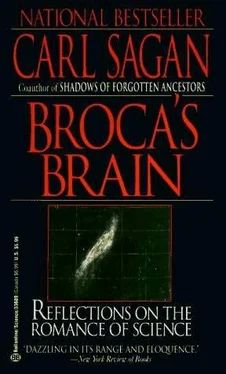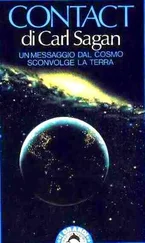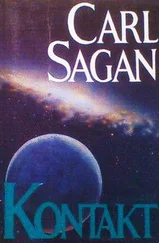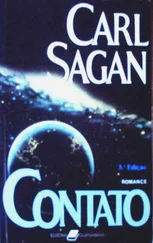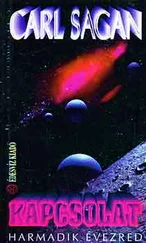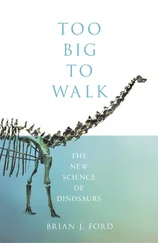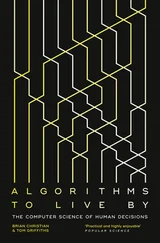Carl Sagan - Broca's Brain - The Romance of Science
Здесь есть возможность читать онлайн «Carl Sagan - Broca's Brain - The Romance of Science» весь текст электронной книги совершенно бесплатно (целиком полную версию без сокращений). В некоторых случаях можно слушать аудио, скачать через торрент в формате fb2 и присутствует краткое содержание. Жанр: Физика, на английском языке. Описание произведения, (предисловие) а так же отзывы посетителей доступны на портале библиотеки ЛибКат.
- Название:Broca's Brain: The Romance of Science
- Автор:
- Жанр:
- Год:неизвестен
- ISBN:нет данных
- Рейтинг книги:3 / 5. Голосов: 1
-
Избранное:Добавить в избранное
- Отзывы:
-
Ваша оценка:
- 60
- 1
- 2
- 3
- 4
- 5
Broca's Brain: The Romance of Science: краткое содержание, описание и аннотация
Предлагаем к чтению аннотацию, описание, краткое содержание или предисловие (зависит от того, что написал сам автор книги «Broca's Brain: The Romance of Science»). Если вы не нашли необходимую информацию о книге — напишите в комментариях, мы постараемся отыскать её.
Broca's Brain: The Romance of Science — читать онлайн бесплатно полную книгу (весь текст) целиком
Ниже представлен текст книги, разбитый по страницам. Система сохранения места последней прочитанной страницы, позволяет с удобством читать онлайн бесплатно книгу «Broca's Brain: The Romance of Science», без необходимости каждый раз заново искать на чём Вы остановились. Поставьте закладку, и сможете в любой момент перейти на страницу, на которой закончили чтение.
Интервал:
Закладка:
There is one further point about scientific method that must be made. Not all scientific statements have equal weight. Newtonian dynamics and the laws of conservation of energy and angular momentum are on extremely firm footing. Literally millions of separate experiments have been performed on their validity-not just on Earth, but, using the observational techniques of modern astrophysics, elsewhere in the solar system, in other star systems, and even in other galaxies. On the other hand, questions on the nature of planetary surfaces, atmospheres and interiors are on much weaker footing, as the substantial debates on these matters by planetary scientists in recent years clearly indicate. A good example of this distinction is the appearance 1975 of Comet Kohoutek. This comet had first been observed at a great distance from the Sun. On the basis of the early observations, two predictions were made. The first concerned the orbit of Comet Kohoutek-where it would be found at future times, when it would be observable from the Earth before sunrise, when after sunset-predictions based on Newtonian dynamics. These predictions were correct to within a gnat’s eyelash. The second prediction concerned the brightness of the comet. This was based on the guessed rate of vaporization of cometary ices to make a large cometary tail which brightly reflects sunlight. This prediction was painfully in error, and the comet-far from rivaling Venus in brightness-could not be seen at all by most naked-eye observers. But vaporization rates depend on the detailed chemistry and geometrical form of the comet, which we know poorly at best. The same distinction between well-founded scientific arguments, and arguments based on a physics or chemistry that we do not fully understand, must be borne in mind in any analysis of Worlds in Collision. Arguments based on Newtonian dynamics or the conservation laws of physics must be given very great weight. Arguments based on planetary surface properties, for example, must have correspondingly lesser weights. We will find that Velikovsky’s arguments run into extremely grave difficulties on both these scores, but the one set of difficulties is far more damaging than the other.
PROBLEM I. THE EJECTION OF VENUS BY JUPITER
VELIKOVSKY’S hypothesis begins with an event that has never been observed by astronomers and that is inconsistent with much that we know about planetary and cometary physics, namely, the ejection of an object of planetary dimensions from Jupiter, perhaps by its collision with some other giant planet. Such a propagation of catastrophes, Velikovsky promised, would be “the theme of the sequel to Worlds in Collision ” (page 373). Thirty years later, no sequel of this description has appeared. From the fact that the aphelia (the greatest distances from the Sun) of the orbits of short-period comets have a statistical tendency to lie near Jupiter, Laplace and other early astronomers hypothesized that Jupiter was the source of such comets. This is an unnecessary hypothesis because we now know that long-period comets may be transferred to short-period trajectories by the perturbations of Jupiter; this view has not been advocated for a century or two except by the Soviet astronomer V. S. Vsekhsviatsky, who seems to believe that the moons of Jupiter eject comets out of giant volcanoes.
To escape from Jupiter, such a comet must have a kinetic energy of ½ mv. 2, where m is the cometary mass and v. is the escape velocity from Jupiter, which is about 60 km/sec. Whatever the ejection event-volcanoes or collisions-some significant fraction, at least 10 percent, of this kinetic energy will go into heating the comet. The minimum kinetic energy per unit mass ejected is then ¼ v. 2= 1.3 × 10 12ergs per gram, and the quantity that goes into heating is more than 2.5 × 10 12erg/gram. The latent heat of fusion of rock is about 4 × 10 9ergs per gram. This is the heat that must be applied to convert hot solid rock near the melting point into a fluid lava. About 10 11ergs/gm must be applied to raise rocks at low temperatures to their melting point. Thus, any event that ejected a comet or a planet from Jupiter would have brought it to a temperature of at least several thousands of degrees, and whether composed of rocks, ices or organic compounds, would have completely melted it. It is even possible that it would have been entirely reduced to a rain of self-gravitating small dust particles and atoms, which does not describe the planet Venus particularly well. (Incidentally, this would appear to be a good Velikovskian argument for the high temperature of the surface of Venus, but, as described below, this is not his argument.)
Another problem is that the escape velocity from the Sun’s gravity at the distance of Jupiter is about 20 km/sec. The ejection mechanism from Jupiter does not, of course, know this. Thus, if the comet leaves Jupiter at velocities less than about 60 km/sec, the comet will fall back to Jupiter; if greater than about [(20) 2+ (60) 2] 1/2= 63 km/sec, it will escape from the solar system. There is only a narrow and therefore unlikely range of velocities consistent with Velikovsky’s hypothesis.
A further problem is that the mass of Venus is very large-more than 5 × 10 27grams, or possibly larger originally, on Velikovsky’s hypothesis, before it passed close to the Sun. The total kinetic energy required to propel Venus to Jovian escape velocity is then easily calculated to be on the order of 10 41ergs, which is equivalent to all the energy radiated by the Sun to space in an entire year, and one hundred million times more powerful than the largest solar flare ever observed. We are asked to believe, without any further evidence or discussion, an ejection event vastly more powerful than anything on the Sun, which is a far more energetic object than Jupiter.
Any process that makes large objects makes more small objects. This is especially true in a situation dominated by collisions, as in Velikovsky’s hypothesis. Here the comminution physics is well known and a particle one-tenth as large as our biggest particle should be a hundred or a thousand times more abundant. Indeed, Velikovsky has stones falling from the skies in the wake of his hypothesized planetary encounters, and imagines Venus and Mars trailing swarms of boulders; the Mars swarm, he says, led to the destruction of the armies of Sennacherib. But if this is true, if we had near-collisions with objects of planetary mass only thousands of years ago, we should have been bombarded by objects of lunar mass hundreds of years ago; and bombardment by objects that can make craters a mile or so across should be happening every second Tuesday. Yet there is no sign, on either the Earth or the Moon, of frequent recent collisions with such lower mass objects. Instead, the few objects that, as a steady-state population, are moving in orbits that might collide with the Moon are just adequate, over geological time, to explain the number of craters observed on the lunar maria. The absence of a great many small objects with orbits crossing the orbit of the Earth is another fundamental objection to Velikovsky’s basic thesis.
PROBLEM II. REPEATED COLLISIONS AMONGTHE EARTH, VENUS AND MARS
“THAT A COMET may strike our planet is not very probable, but the idea is not absurd” (page 40.) This is precisely correct: it remains only to calculate the probabilities, which Velikovsky has unfortunately left undone.
Fortunately, the relevant physics is extremely simple and can be performed to order of magnitude even without any consideration of gravitation. Objects on highly eccentric orbits, traveling from the vicinity of Jupiter to the vicinity of the Earth, are traveling at such high speeds that their mutual gravitational attraction to the object with which they are about to have a grazing collision plays a negligible role in determining the trajectory. The calculation is performed in Appendix 1, where we see that a single “comet” with aphelion (far point from the Sun) near the orbit of Jupiter and perihelion (near point to the Sun) inside the orbit of Venus should take at least 30 million years before it impacts the Earth. We also find in Appendix 1 that if the object is a member of the currently observed family of objects on such trajectories, the lifetime against collision exceeds the age of the solar system.
Читать дальшеИнтервал:
Закладка:
Похожие книги на «Broca's Brain: The Romance of Science»
Представляем Вашему вниманию похожие книги на «Broca's Brain: The Romance of Science» списком для выбора. Мы отобрали схожую по названию и смыслу литературу в надежде предоставить читателям больше вариантов отыскать новые, интересные, ещё непрочитанные произведения.
Обсуждение, отзывы о книге «Broca's Brain: The Romance of Science» и просто собственные мнения читателей. Оставьте ваши комментарии, напишите, что Вы думаете о произведении, его смысле или главных героях. Укажите что конкретно понравилось, а что нет, и почему Вы так считаете.
